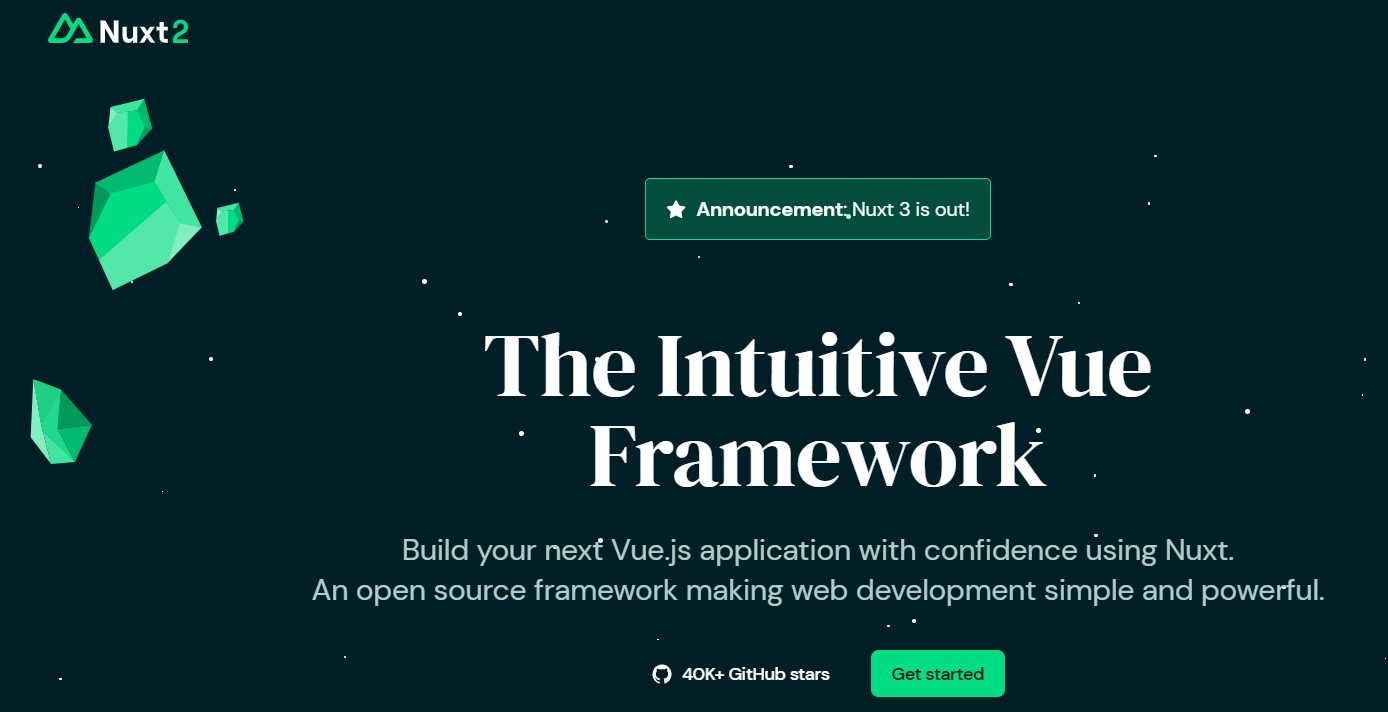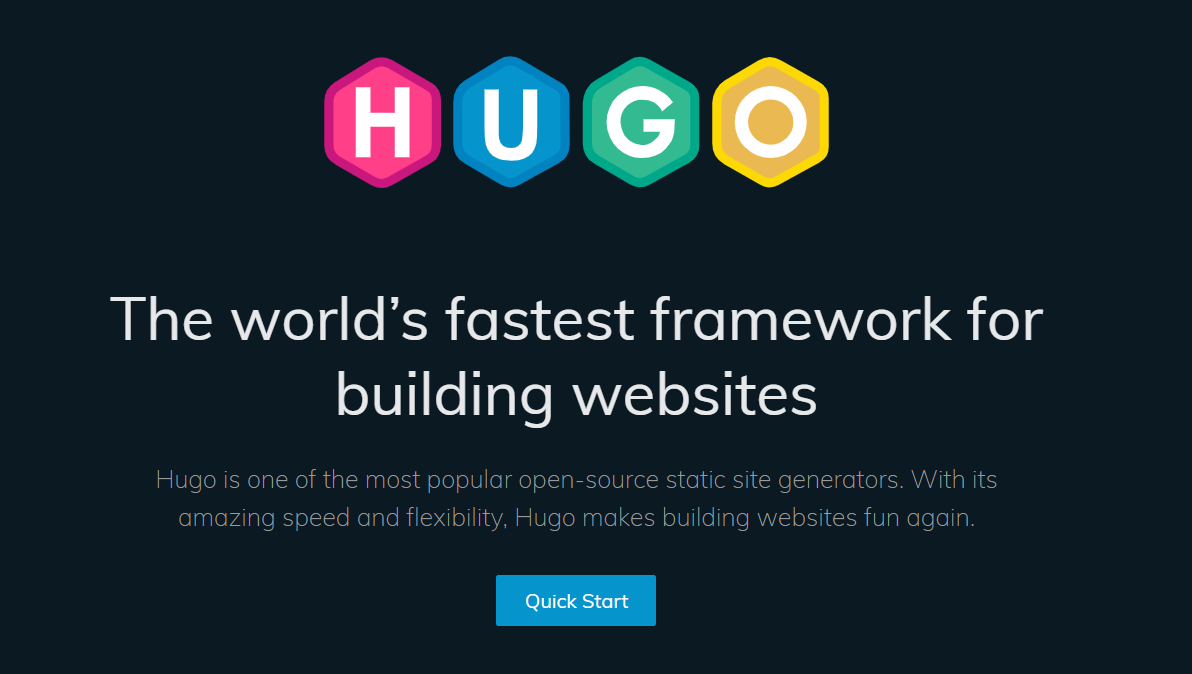Jamstack is a modern development philosophy that doesn’t rely on just a set of technologies. Instead, it is flexible and configurable, allowing developers like you to pick your framework to create the Jamstack website.
However, the ability to choose your tools can also confuse you. That’s why, in this article, we’ll look at the best framework for Jamstack.
If you want to read more about What Jamstack is and how you can use it to create lightning-fast secure websites, check out Jamstack for Newbies.
Jamstack popularity
Jamstack was first released in 2015. From there, it has shown tremendous growth. The numbers suggest that new developers are picking up Jamstack(19% in 2021 compared to 13% in 2020). Another interesting statistic is the number of Jamstack websites. It increased by 50% (2020 vs. 2021).
The eCommerce and tech companies are also adopting the Jamstack philosophy, with 48% wanting to use Jamstack in the next year.
So, if you’re on the path to picking Jamstack, you’re in the right direction. You can try out the framework by reviewing the documentation, watching a video, or creating a demo site.
Next.js
Next.js lets you create a high-performance website rapidly. Its popularity stems from its ability to create high-performance web apps with React. With it, you can create static sites and full-stack web applications using React.

According to the Jamstack Developers Survey 2022, every 1 in 2 developers uses Next.js to develop their Jamstack website.
Also, you get excellent community support, enabling you to troubleshoot faster. Apart from that, you get access to a vast component-bad library. It is also highly customizable, with built-in TypeScript and CSS support.
You can serve static websites with it while putting dynamic features to render on the server side.
Key Features:
- Dynamic HTML streaming
- Data fetching
- Built-in optimizations
- API routes
- Client and server rendering
- Powerful routing and layouts
- Middleware
Even though the Jamstack website is mostly about serving static content, you can use Next.js to create hybrid applications rendered on the server side and then served statically on the web.
Gatsby.js
GatsbyJS is another popular front-end framework. You can use Gatsby to build fast Jamstack static sites and web apps. Thanks to its unique community and documentation, you’ll find Gatsby easy to get started with as a developer.

In addition, you can also set up Gatsby to have faster build time and make apps SEO-compatible out of the box.
Under the hood, it utilizes React, and the project is open-source. Its unified data layer approach can render data from different sources.
Key Features:
- Offers blazing fast website loading speed with deferred static generation, static-site generation, and intelligent page rendering
- It offers ready-to-use plugins, starters, and themes.
- Provides developers access to Webpack, GraphQL, and other cutting-edge technology
- Scale websites instantly to meet demand.
Gatsby is perfect for businesses and developers who want fast and feature-rich websites. Developers especially can use Gatsby as it offers a modern workflow that relies on the latest web standards and technology. Moreover, it provides access to a promising ecosystem of boilerplates, starters, and plugins.
Finally, it also offers accessibility and scalability options.
Nuxt.js
Nuxt.js is an open-source Vue-based framework ideal for creating your next Jamstack website. Its modular-first design makes development easy and intuitive. Right now, it offers more than 160 modules.
Apart from its modularity, you’ll also find Nuxt to offer excellent performance out of the box. As a developer, you can also use its bundle analyzer to optimize the app further. Overall, it is easy to learn and master, making it an excellent pick for developer experience.

Key Features:
- Great modularity
- File-system routing
- Data fetching
- SEO friendly
- Components auto-import
Nuxt offers excellent static side rendering, which makes it great for Jamstack development. However, it improves on it by providing server-side rendering, which means you can create a dynamic website in Vue.js before rendering it on the server side, and then delivering it statistically through CDN or delivery platforms such as GitHub pages or Netlify.
Hugo
Hugo is a Go-powered static site generator. It is a perfect companion for Jamstack, even if you don’t know Hugo, as you can configure Hugo without editing any of its Go files.
Hugo’s single executable makes it less dependable and extremely fast, making it ideal for developing static and dynamic sites in less time.

In terms of usability, you get plenty of in-built templates and themes. However, it does have a slightly steep learning curve.
Key Features:
- 300+ themes to choose from
- Capable templating engine
- Excellent performance
- Supports shortcode
- Multi-language support
It is also extremely fast, so Jamstack sites using Hugo can load within 1 second most of the time.
Jekyll
Jekyll ticks all the checks when it comes to the Jamstack framework. It is simple and offers the ability to create a static website in HTML, CSS, Liquid, and Markdown while offering blog features.

Moreover, you can freely use GitHub Pages to host your Jekyll-created Jamstack websites. This extensibility with GitHub pages is because Tom-Preston, GitHub’s co-founder, developed Jekyll.
In the Jamstack universe, it classifies as a static site generator. However, you can use it to create various projects, including personal blogs, business websites, and even enterprise web apps.
Under the hood, Jekyll uses Ruby, which can make dependency management time-consuming.
Key Features:
- Built-in GitHub Pages integration
- Easily extensible
- Large community
- Great contributors, keeping the project alive
Jekyll lets you follow your development path without diverting yourself. So, you tell it to do something, and it will do it without trying anything else. Furthermore, Jekyll is an open-source project.
TezJS

If you want to create a fast, SEO-ready Jamstack website, then TezJS is a great pick. It offers developers a fast yet scalable way to develop Jamstack websites. Furthermore, it keeps all the benefits intact, even if you want to create a modern yet rich UI/UX website.
It also excels in SEO, as you can achieve a 98+ Core Web Vitals score. Lastly, it also supports multi-language.
Key Features:
- Supports content lazy loading
- Route-based splitting
- Dynamic & auto routing
- Route based splitting
- Component driven architecture
- Environmental variable management
TezJS lets Jamstack developers create robust, SEO-oriented, rich websites that can be served statistically. It excels at managing content and offers high-end features to manage your site.
Docusaurus
Docusaurus is the latest Jamstack framework ideal for those who want to build a top-notch documentation site. It lets developers create a site where content can be written and managed in markdown files.
With it, you can set up a Jamstack site within 5 minutes and customize it according to your needs.
As for the tech, Docusaurus uses React. This means you can use React to create, extend and customize the project’s layout. It also features pluggable architecture, making adding new features accessible.
Key Features:
- Supports translations
- Offers document versioning
- Excellent content search
Docusaurus is an excellent pick for creating a content-focused Jamstack website, such as a documentation site. It offers MDX that allows using JavaScript in markdown content, which lets you add interactivity, such as charts, and alerts, to your site.
Other Notable Jamstack Frameworks
Jamstack is a new philosophy to develop fast and modern websites. However, it has seen an excellent growth trajectory in such a short time. With each passing year, more and more developers are adopting it. The Jamstack community is also growing, which means there are more amazing Jamstack frameworks that you can try. These include the following:
- Hexo: Hexo is a Node.js-powered blog framework that offers developers an easy and intuitive way to create fast Jamstack websites. It supports one-command deployment and plugins for limitless extensibility.
- GitBook: GitBook is similar to Docusaurus, which lets technical teams create, manage and share documentation. Using it, teams can centralize product or service knowledge.
- Astro: Astro is a highly optimized fast Jamstack framework. It uses a zero-JS frontend architecture, improving the site’s SEO and conversion rates.
- VuePress: VuePress is a Vue-powered static site generator that lets developers create minimal and markdown-focused Jamstakc sites.
Conclusion
Jamstack is here to stay. It is a modern way to build sites. The plethora of frameworks, tools, and static site generators(SSGs) gives developers the flexibility to choose and grow their sites uniquely.
By now, you have a good idea of which Jamstack framework to use.
Happy, Jamstacking!
You may also read the best CSS frameworks/libraries for front-end developers.


















